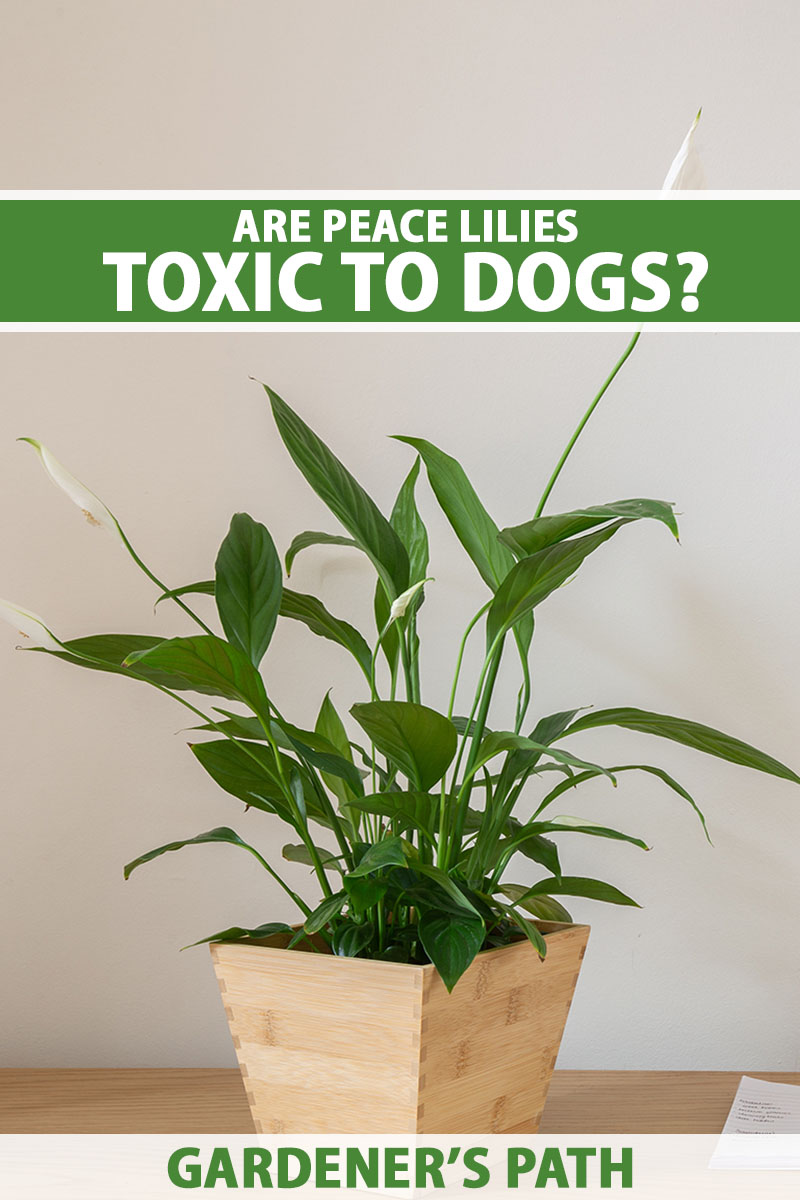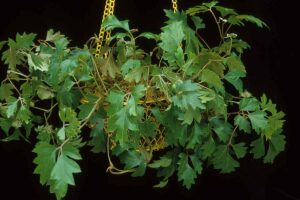My 120-pound German shepherd, Gamble, has occasionally broken a stem or a few leaves of the potted peace lily on our hearth with his exuberant tail-wagging.
It’s hard to reprimand such a lovable guy, and the Spathiphyllum plant quickly rejuvenates, so I don’t worry about it too much!
But while a dog chewing or consuming one of those leaves might be okay for the plant, it can cause distress for your pet.
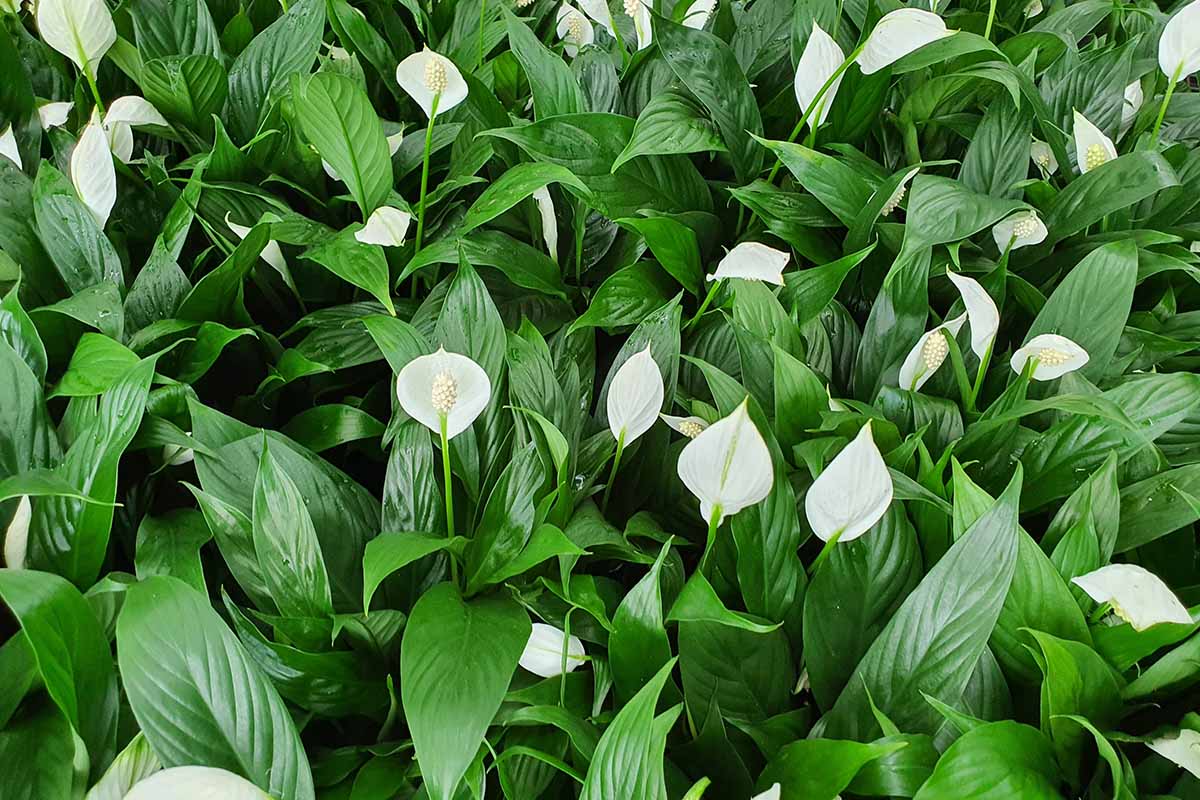
We link to vendors to help you find relevant products. If you buy from one of our links, we may earn a commission.
The effect will not be fatal, but it’s worth avoiding. We pet parents don’t want our fur kids to suffer more than necessary, especially in preventable situations.
If you’re here because you witnessed your dog chomping on a peace lily plant I’ll cover ways to respond.
But if your dog is showing signs of distress, or you are not sure what plant they ingested please call your veterinarian immediately.
In this guide, we’ll discuss whether peace lilies are toxic to dogs and what to do if your pet nibbles on your plant.
Here’s what to expect:
What You’ll Learn
Will Peace Lilies Poison My Dog?
It’s important to understand what we mean when we say a plant is “toxic” to animals.
The dictionary definition is “containing or being poisonous material, especially when capable of causing death or serious debilitation.”
But the term toxic can also be used to refer to reactions that aren’t as severe, and dogs chewing peace lilies are in that category.
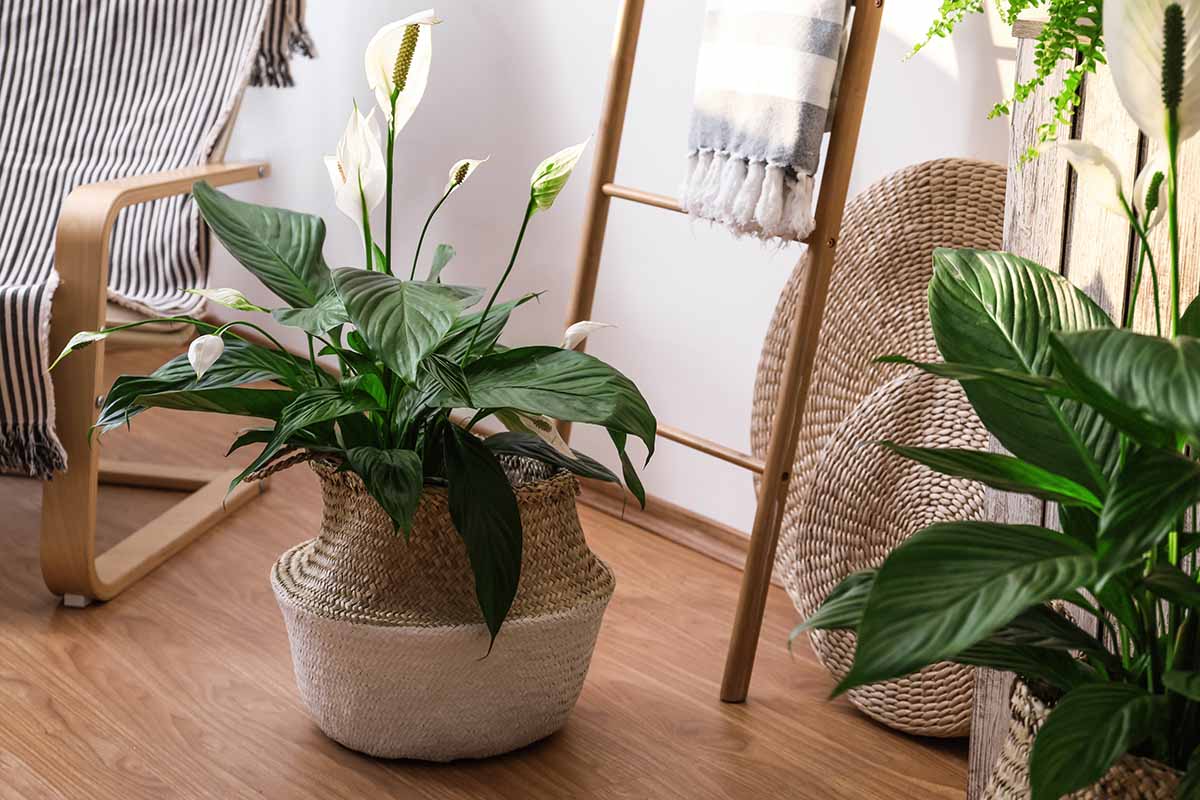
Peace lilies contain insoluble calcium oxalate crystals which, when consumed can cause painful swelling and irritation of the mouth, throat, and stomach. This can result in gastrointestinal distress, particularly in young, old, or compromised animals.
In some cases, ingestion can cause swelling of the airways, resulting in your dog having difficulty breathing.
When a dog gnaws on any part of a Spathiphyllum, the most likely result will be painful swelling and irritation in the mouth.
Aside from being caught in the act, indications that the substances have affected your dog include excessive drooling, trouble swallowing, vomiting, and possibly whining while pawing at the mouth.
The damage might extend to painful indigestion if the canine swallows some of the foliage, stems, or roots.
Remember that if your dog swallowed part of the plant, it may take a couple of hours for the digestive pain to begin.
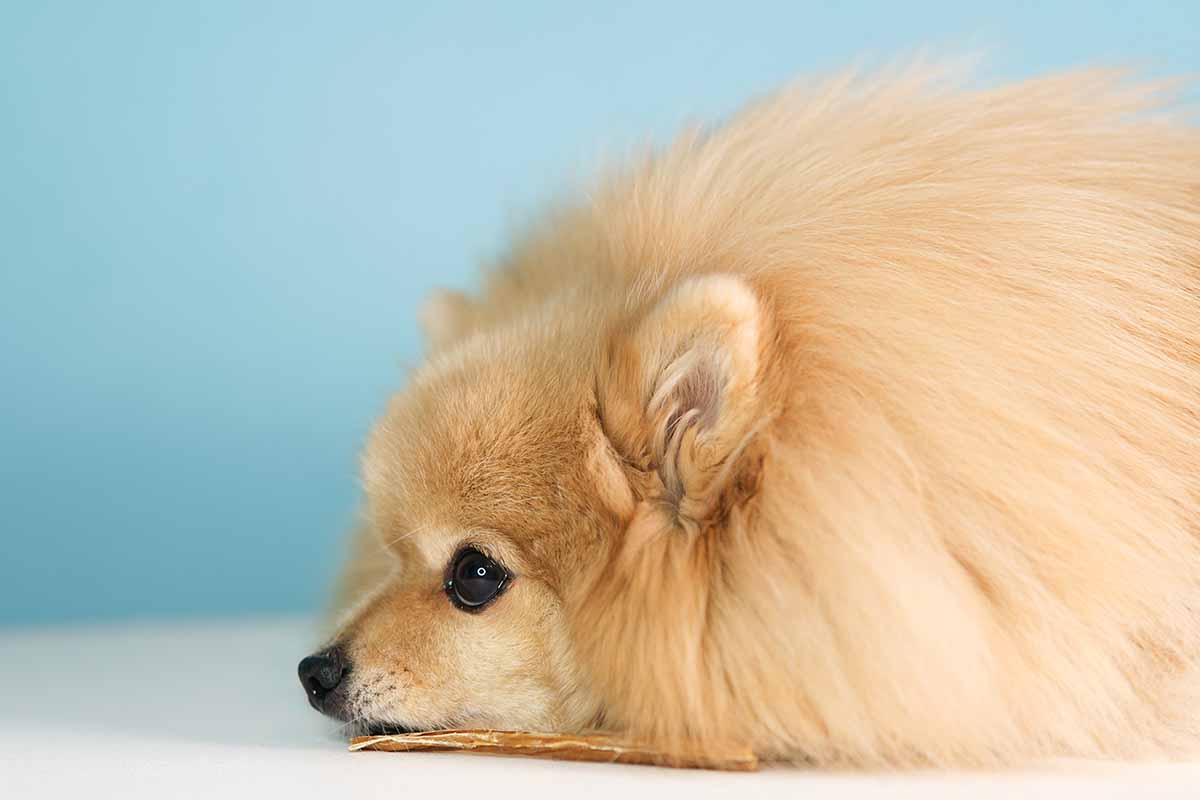
Now, will peace lily nibbling kill your dog? No, it won’t. But the more plant tissue your dog consumes, the worse the reaction is likely to be.
If that seems incorrect because you’ve heard lilies are extra toxic, you’re right, they are, particularly to cats.
But Spathiphyllum plants are not “true” lilies. These plants belong to the Araceae family which includes caladium and elephant’s ear.
However, quickly call the veterinarian if your pup has chewed a peace lily or you suspect they have.
There’s no substitute for expert advice, and of course, when you love your dog, you’ll want to err on the safe side.
Here are the numbers for two 24-hour hotlines:
ASPCA Animal Poison Control Center: 888-426-4435
Pet Poison Helpline®: 855-764-7661
Warning! Some Lilies Are Life-Threatening
You face a more urgent situation if you came upon this article because your dog ate a plant with “lily” in its name, and you’re not sure what variety it is.
In that case, call your veterinarian and/or the Pet Poison or ASPCA Hotline for immediate advice.
Dogs aren’t as susceptible as cats, but consuming these plants can cause more severe discomfort and dramatic digestive and breathing symptoms than gnawing on a peace lily.
Daylilies (Hemerocallis spp.), and Easter and Asiatic lilies (Lilium spp.) can cause severe, even fatal, kidney damage, for example, while ingesting lily of the valley (Convallaria spp.) might lead to an irregular heartbeat.
If there’s the slightest chance your dog could have ingested one of these other plants, call your veterinarian ASAP or turn to one of the pet poison hotlines.
Quick Response
If you witness your dog chomping on a piece of your peace lily, or you note one or more of the symptoms described above, and are confident that this is what’s happened, pause briefly for a deep breath.
Staying calm may help you remember the logical steps to take, and it should help your dog stay calm, too.

When you can determine which plant’s been chewed, quickly block all the household’s cats and dogs from the area.
It’s unlikely your pup will continue to bite a plant that leaves a ground-glass sensation in its mouth but don’t run the risk.
Double-check that you’re dealing with a peace lily, not another houseplant that may present different issues.
If it has a tag from the nursery with a picture, examine that first.
Don’t spend more than a minute or two on plant identification before calling your veterinarian for advice specific to your pet. They may ask you to bring a sample of the plant or to forward them a cell phone photo for reference.
Ingesting a few leaves could necessitate a vet visit for antihistamines, fluid replacement, and other treatments, but let your trusted caregiver advise.
If they’re not readily available, call one of the pet poison hotlines listed above.
To counter the immediate effects of oxalate crystals, rinse your dog’s mouth with fresh, clean water.
Provide an ice cube or frozen treats to soothe the swelling. If the symptoms immediately abate, you’re okay to go ahead and clean up any mess and work on salvaging the plant.
If your plant survived the ordeal, follow the tips below to reduce the risk of further incidents.
Preventive Measures
It’s our job as pet parents to fret about our kids, but you can take steps to prevent your dog from having a bad reaction to calcium oxalate crystals in these houseplants.
For a start, don’t bring any type of lily into a home with dogs without rigorously determining that it is a Spathiphyllum, not one of the more toxic varieties.
Sometimes a brand-new plant will become a chew toy for a canine not previously interested in gnawing houseplants. Be extra careful with new purchases or when bringing houseplants inside for the winter.
Place the plants where dogs can’t reach them. This isn’t as tough as it would be for other plant varieties since peace lilies only require medium, indirect light.
No need to set them on a sunny windowsill that an enterprising dog can hop onto.
You know your four-legged kids’ habits better than anyone, so think hard about ingenious ways they might decide to climb onto a counter or tall bookshelf to get to an appealing plant.
Please Don’t Eat the Peace Plants, Pup!
Our pets and our houseplants both inspire our devotion.
It’s nice to know peace lilies can coexist with pups, as long as you’re careful and proactive.

Would you like to add to the conversation? The comments section below is open for you to share your experiences with dogs and peace lilies.
Feel free to add questions that haven’t been addressed in this guide. We’re happy to field them!
But if your question involves a dog chewing on a Spathiphyllum or other toxic houseplant, don’t wait for our response. Call your veterinarian or the ASPCA Animal Poison Control Center 24-hour hotline (888-426-4435) for advice, pronto.
If you’d like to learn more about growing and caring for this easy-care houseplant, read these peace lily guides next:
